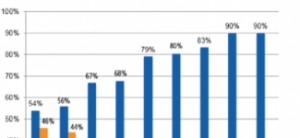Why Prioritization Matters
Effective job order pipeline management is the backbone of any successful staffing firm. Prioritizing and organizing job orders in real time ensures maximum efficiency and higher placement rates.
Without a structured approach, staffing firms risk losing valuable recruiting cycles on low-priority roles while missing out on high-value placements.

The minute-by-minute prioritization of job orders determines a staffing firm’s financial success. Priorities shift constantly as new job orders come in, requiring real-time adjustments based on:
✅ Client responsiveness and hiring timelines
✅ Candidate availability and urgency of the position
✅ Revenue potential and contract length
Not all job orders are created equal. Some contribute significantly to revenue, while others can become distractions that drain time and resources. By implementing a structured job order pipeline management process, recruiters can focus on high-impact placements.
Optimizing Recruiting Cycles for Maximum Efficiency
Efficient job order pipeline management starts with utilizing data-driven insights from your ATS or CRM to evaluate and rank job orders based on:
🔹 Client Engagement: Prioritize jobs where hiring managers provide timely feedback.
🔹 Job Order Urgency: Assess positions based on contract start dates and critical hiring needs.
🔹 Weighted Revenue Potential: Assign higher priority to roles with strong bill rates and long-term placements.
By proactively managing the pipeline, recruiters avoid wasting time on low-value job orders and instead focus on those offering the highest ROI.
Reassessing Low-Value Job Orders
Not all job orders are worth pursuing. Staffing firms must learn when to:
🚫 Reprioritize job orders based on new client insights.
⏸️ Put on Hold job orders where clients lack urgency or clear hiring timelines.
❌ Ignore job orders with poor response rates or uncompetitive bill rates.
By systematically evaluating client relationships, hiring processes, and financial viability, staffing firms can allocate recruiter efforts more strategically.
Understanding the Job Order Lifecycle
Every job order moves through a lifecycle, requiring constant tracking and updates to ensure recruiting teams are working on the most valuable opportunities. A well-managed pipeline includes:
📌 Tracking Candidate Submissions: Ensuring each job order has the appropriate number of qualified candidates submitted.
📌 Monitoring Rejections: Understanding why candidates are rejected internally or by the client.
📌 Assessing Job Order Age: Ensuring older job orders don’t clog up the pipeline without progress.
Utilizing an Applicant Tracking System (ATS) to automate job order tracking can streamline the process and keep teams aligned.
Technology and Automation in Pipeline Management
Leveraging technology is essential to optimizing job order pipeline management and eliminating inefficiencies. Applicant Tracking Systems (ATS) like JobDiva provide automation that helps:
✅ Auto-rank job orders based on urgency and revenue potential.
✅ Track candidate progress and hiring manager responsiveness.
✅ Generate real-time analytics to assess job order performance.
🔗 Explore JobDiva’s Role in ATS Optimization
Final Thoughts
Job order pipeline management isn’t just about tracking open positions—it’s about prioritizing high-value opportunities, optimizing recruiting workflows, and driving profitability. A structured, technology-driven approach ensures staffing firms stay ahead in a fast-paced, competitive hiring market.
Looking to optimize your staffing firm’s success? Contact Recruiting Factors today and let our experts help you achieve your growth goals. Schedule a Free Consultation.
